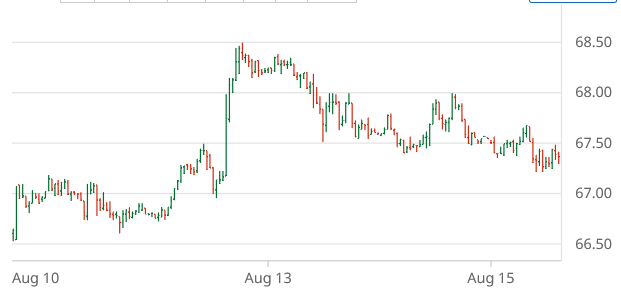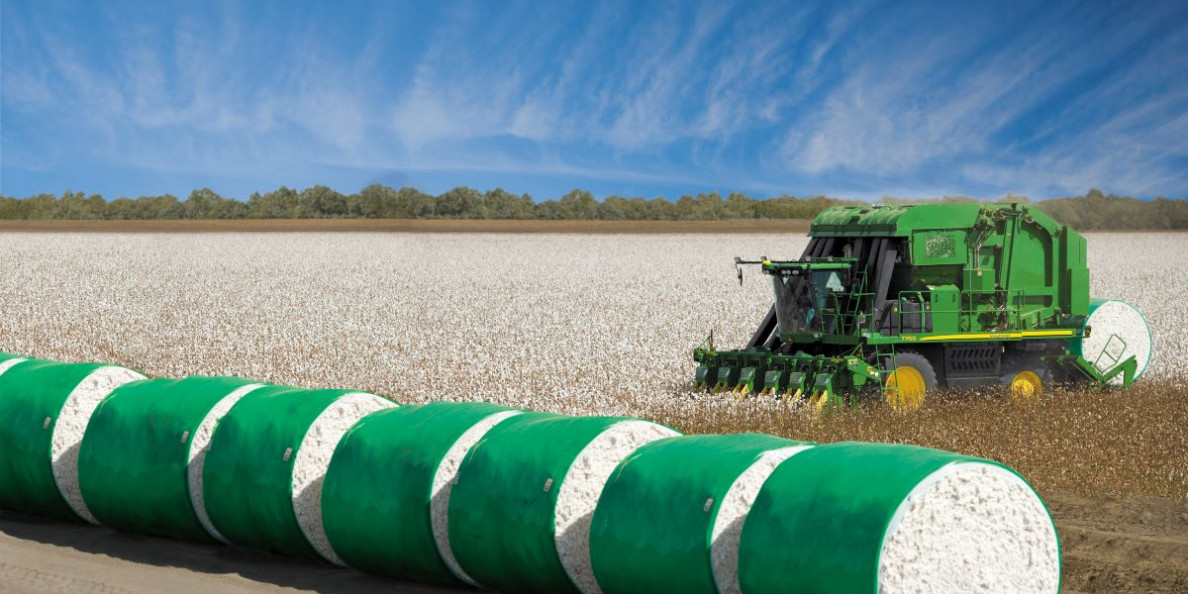The week ending Friday, August 15 saw ICE cotton futures take one big stair step higher following Tuesday’s bullish WASDE report, then slide into a modest down-trend (see chart above courtesy of Barchart.com). Dec’25 ICE cotton settled Friday at 67.54 cents per pound, while Dec’26 settled at 69.22 cents. Through August 14, 2025, Chinese cotton prices rose modestly but steadily, while the A-Index of world cotton prices was flat-to-higher.
Other commodity futures markets showed different patterns this week. CBOT corn started the week flat, then took a big stair-step lower, then followed a slight up-trend. CBOT soybeans took several steps higher, then traded flat. KC wheat futures followed a gradual down-trend across the week. ICE WTI crude oil futures followed a widely gyrating sideways patterns, as did the U.S. dollar index. Other macro influences (i.e., GDP, inflation, and interest rate policy) remained mixed in their expectation and implication for slow economic growth.

Cotton-focused market influences this week included price supportive supply and demand adjustments by USDA. The week also saw continued weekly reports of very light to moderate regional demand for U.S. cotton, along with light supplies. Weekly net sales for the 2025/26 marketing year improved to 244,100 bales of all cotton for the week ending August 7.
Agronomic influences included widely scattered showers over Oklahoma and Texas, scattered showers over Kansas, and heavier rains over various parts of the eastern Cotton Belt. On the other side of the world, the precocious Indian monsoon has brought above average rains that have likely increased plantings of summer sewn crops, including cotton. The second half of the monsoon season is forecasted to be average in August and above average in September. This could boost Indian and Pakistani production, perhaps at the expense of demand for U.S. exports.
For the week ending August 14, the day-to-day shifts in ICE cotton open interest were mixed, with open interest rising through Tuesday before downshifting. Price settlements followed a similar pattern, suggesting some possible long positioning through Tuesday (WASDE report day). However, the regular weekly (Tuesday, August 12) snapshot showed mixed speculative positioning with 536 new hedge fund longs, week over week. However, this was outweighed by 1,759 extra hedge fund short positions, reinforced by a 2,009 contract shrinkage in the index trader net long position, week over week.
The dynamics of ICE cotton futures may also represent a wet blanket on the market. It remains true that unfixed call sales (by mills) are at an historically low level, perhaps reflecting the cautionary buying on the demand side. In terms of ratios, unfixed call purchases (by suppliers) outweigh unfixed call sales by two-fold across all contracts, as of August 1.
For more details and data on Old Crop and New Crop fundamentals, plus other near term influences, follow these links (or the drop-down menus above) to those sub-pages.
Πηγή: TAMU

